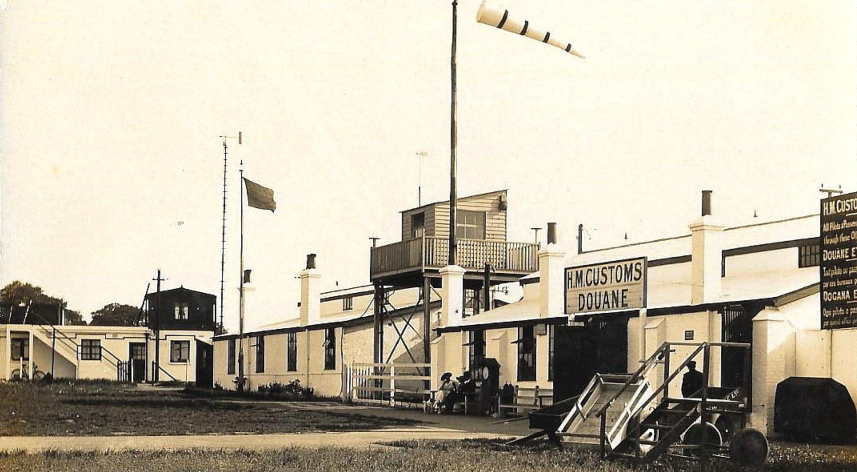Air traffic control (ATC) is a fascinating and vital aspect of modern aviation, ensuring the safety and efficiency of flights across the globe. While many are aware of the importance of air traffic controllers, there are numerous intriguing and lesser-known facts about this field. Here are 17 things you probably didn’t know about air traffic control:
1. The Birth of Air Traffic Control

The first air traffic control tower was established in 1920 at Croydon Airport in London. Archie League, often recognized as the first air traffic controller, began working in St. Louis, Missouri, in 1929, using flags to guide aircraft. This marked the formal inception of organized air traffic management.
2. Navigating the Skies Before ATC

Before the establishment of air traffic control, pilots relied heavily on visual navigation, using landmarks and geographical features to find their way. They also used basic communication with ground stations and other aircraft. Dead reckoning, which involves calculating the current position based on a previously determined position, was a common technique. Additionally, early pilots used beacons and bonfires as navigational aids, especially during night flights.
3. The Origins of the Need for ATC
The necessity for air traffic control became evident after World War I as commercial aviation started to grow. The skies became busier, and there was a pressing need to manage air traffic to prevent accidents and ensure efficient operations. The advent of larger and faster aircraft made it clear that a more organized system was required.
4. The Push for Air Traffic Control: Notable Incidents
Several accidents highlighted the urgent need for air traffic control. One significant event was the mid-air collision over the Grand Canyon in 1956, where two commercial airliners crashed, killing all 128 people on board. This disaster underscored the limitations of the then-current air traffic control systems and spurred the development of more advanced ATC technologies and regulations.
5. The Evolution of Technology
Early air traffic control relied on visual signals and rudimentary communication tools. Today, sophisticated radar systems, satellite technology, and digital communication networks ensure precise and real-time tracking of aircraft. Automatic Dependent Surveillance-Broadcast (ADS-B) is one such technology, allowing aircraft to broadcast their position to both controllers and other aircraft.
6. The Role of ATC in Avoiding Mid-Air Collisions
One of the primary functions of air traffic control is to prevent mid-air collisions. Controllers manage aircraft movements within controlled airspace and provide separation between planes, especially during takeoff, landing, and while en route. They use radar and other surveillance technologies to monitor aircraft positions and ensure safe distances are maintained.
7. The Human Factor in ATC
Despite advancements in technology, human air traffic controllers are crucial. Their ability to make quick decisions, handle emergencies, and communicate effectively with pilots is irreplaceable. Controllers undergo extensive training to develop the skills needed to manage complex and dynamic air traffic scenarios.
8. The Stressful Nature of the Job
Air traffic control is considered one of the most stressful professions. Controllers must maintain high levels of concentration and composure, often working long shifts in high-pressure environments. The responsibility of ensuring the safety of hundreds of lives at any given time can be mentally and emotionally taxing.
9. The Global Reach of ATC
Air traffic control is a worldwide network. International coordination ensures that aircraft can fly safely across borders, with controllers handing off responsibility from one region to another seamlessly. Organizations like the International Civil Aviation Organization (ICAO) help standardize ATC procedures globally.
10. The Language of ATC
English is the universal language of aviation, including air traffic control. This standardization ensures clear and consistent communication between pilots and controllers from different countries. The use of standardized phraseology reduces the risk of misunderstandings.
11. The Training Process
Becoming an air traffic controller requires rigorous training. In the United States, candidates undergo several months of intensive education at the FAA Academy, followed by on-the-job training at assigned facilities. The training includes both theoretical knowledge and practical simulations to prepare controllers for real-world scenarios.
12. The Use of Call Signs
Every aircraft has a unique call sign used in communication with air traffic control. These call signs often include the airline’s name or code and a flight number, helping controllers and pilots identify each other quickly. Call signs are crucial for maintaining clear and organized communication, especially in busy airspace.
13. The Importance of Weather Information
Weather plays a critical role in air traffic control. Controllers must constantly monitor weather conditions and provide pilots with updates to ensure safe navigation and landing, especially in adverse conditions. Weather information helps in planning routes, avoiding turbulence, and managing traffic flow during storms or other severe weather events.
14. The Concept of Airspace Classes
Airspace is divided into different classes, each with specific rules and requirements. Controllers manage various classes of airspace, from busy commercial zones to more relaxed general aviation areas. Class A airspace, for example, covers high-altitude flights, while Class G is uncontrolled and typically found at lower altitudes.
15. The Role of Ground Control
Ground control is a subset of air traffic control focused on managing aircraft movements on the ground. This includes taxiing, ensuring safe runway operations, and coordinating ground traffic to prevent accidents. Ground controllers work closely with tower controllers to manage departures and arrivals efficiently.
16. The Implementation of NextGen
NextGen is a modernization initiative by the FAA to transform the air traffic control system in the United States. It aims to improve efficiency, reduce delays, and enhance safety through advanced technology and procedures. NextGen includes enhancements like Performance-Based Navigation (PBN) and Data Communications (Data Comm).
17. The Future of ATC
The future of air traffic control lies in automation and artificial intelligence. Emerging technologies promise to further enhance safety and efficiency, potentially reducing the workload on human controllers and paving the way for more complex air traffic management. Concepts like remote towers and unmanned traffic management (UTM) for drones are already being explored.
Conclusion
Air traffic control is a critical component of the aviation industry, ensuring that millions of passengers reach their destinations safely every day. The next time you fly, take a moment to appreciate the intricate and highly coordinated efforts of air traffic controllers working behind the scenes.







GIPHY App Key not set. Please check settings